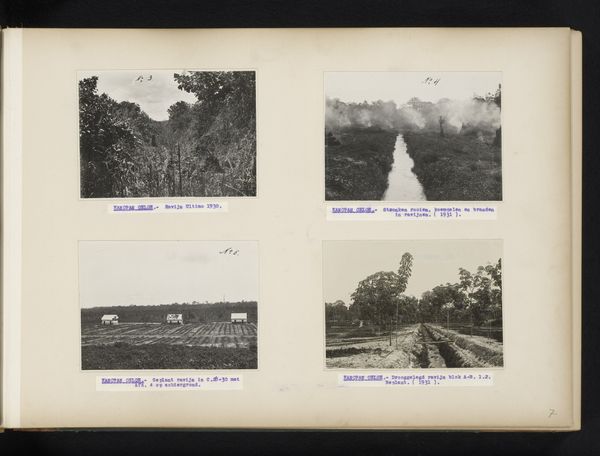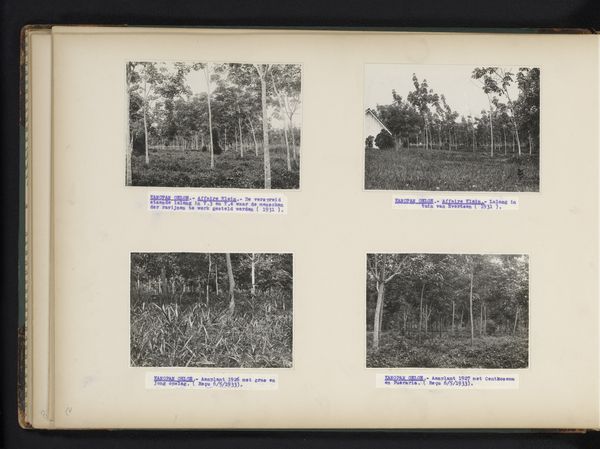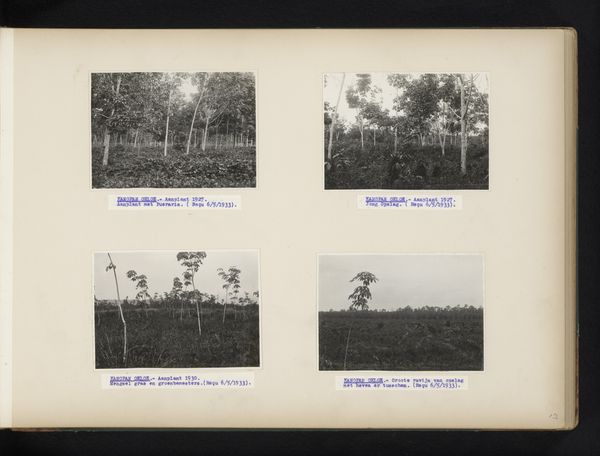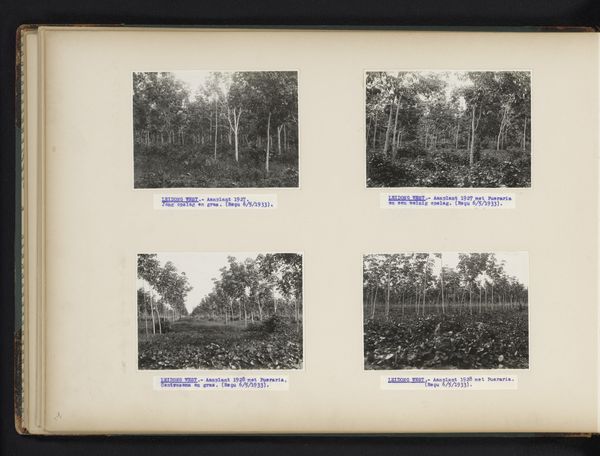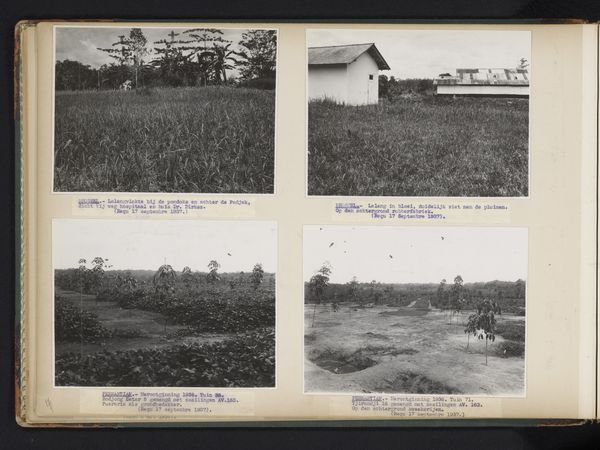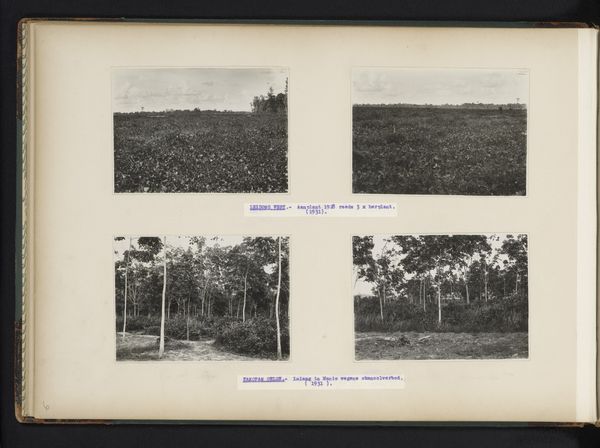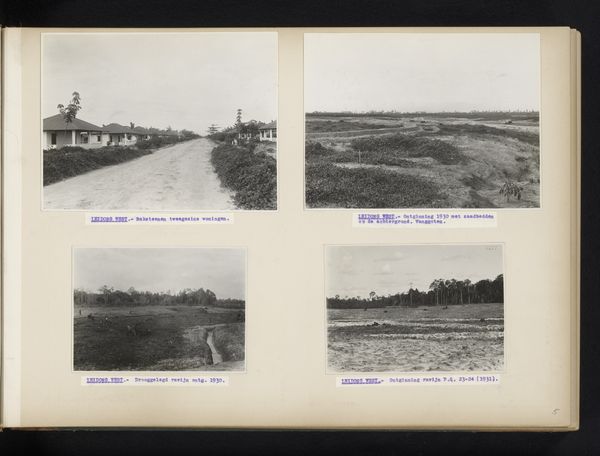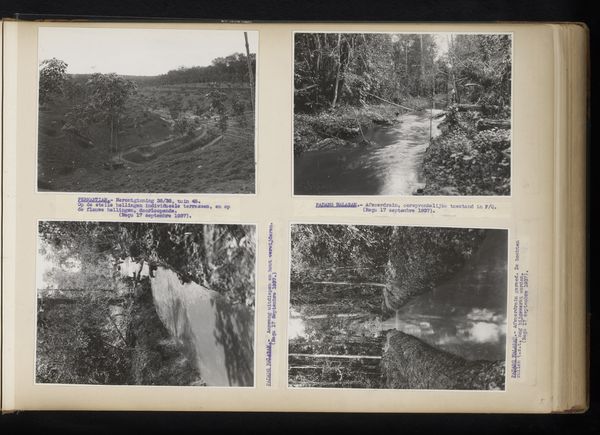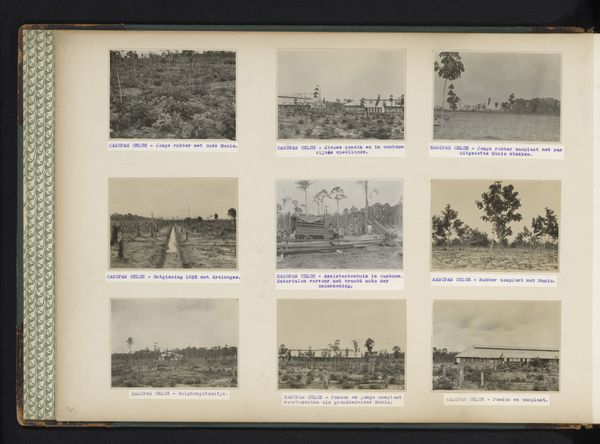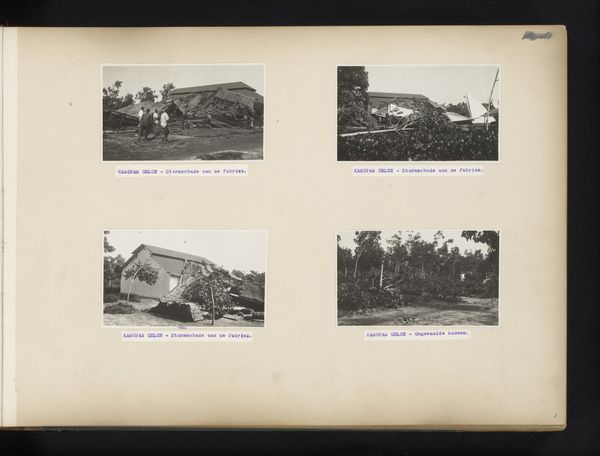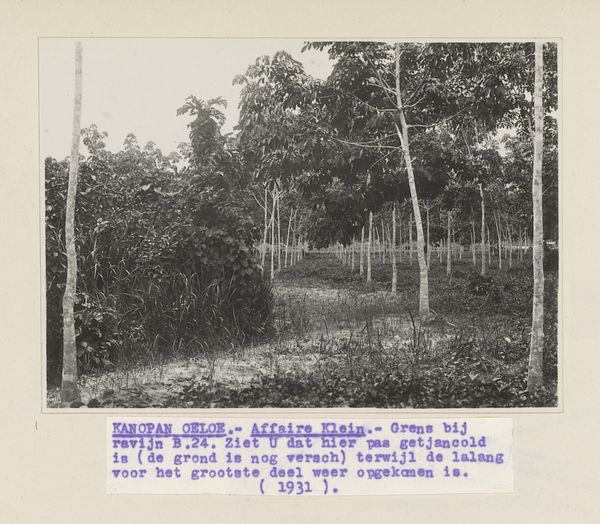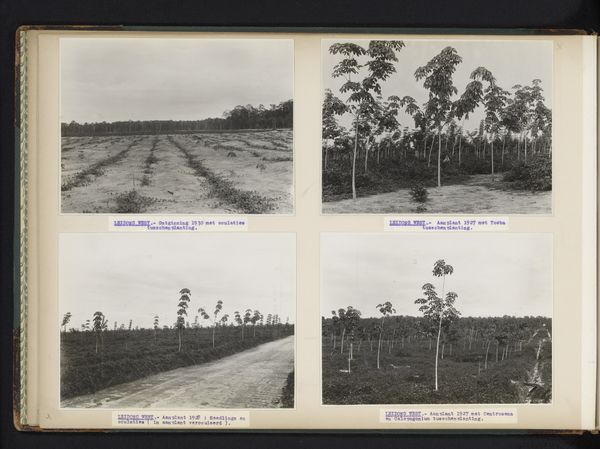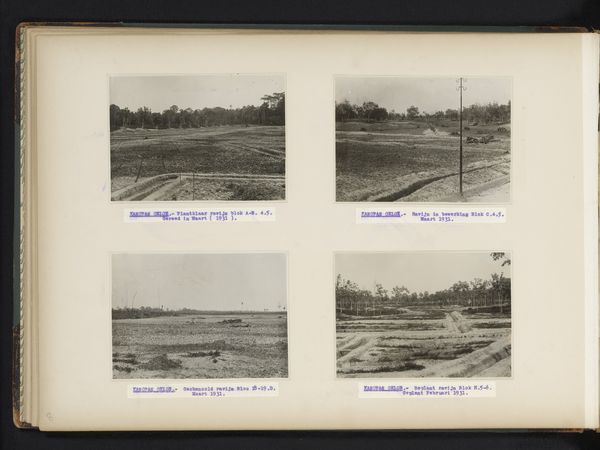
photography
#
landscape
#
photography
#
photojournalism
Dimensions: height 110 mm, width 152 mm, height 338 mm, width 476 mm
Copyright: Rijks Museum: Open Domain
Curator: Looking at "Affaire Klein op Kanopan Oeloe, 1931," I am immediately struck by the repetitive nature of the compositions. What's your first take? Editor: My first thought goes straight to exploitation. The photographs depict an arrangement of land divisions, likely part of a plantation system—the visual organization of nature mirroring colonial exploitation of labor. It is a grim scene that reveals systematic abuse, right? Curator: It’s a photojournalistic work dating from 1931. And while I see that viewpoint, let's dig into the specifics of this work from a material standpoint. These images were most likely produced as evidentiary documentation and, considering the date, reflect particular printing processes that may also point to industrial development and mass communications of the time. The layout in this album further suggests it was probably mass produced and circulated widely, or within specific business circuits. Editor: Yes, this makes me wonder, who was the intended audience? The photographic album acts as a witness, yes, but it must also be examined for whose purpose it serves. Were they intended to garner local political backing? Curator: Perhaps; more research is certainly needed, however one may note that a picture of nature under resource extraction is central here. This aligns with an idea in some materialist circles of holding these industries accountable via image or likeness. There is definitely more here about power dynamics between who holds capital versus what populations or ecologies exist within the bounds. Editor: Precisely. When we consider its potential reach, we have to consider how these images, while perhaps showing material reality, served colonial interests that further dispossessed and marginalized native communities. It presents a critical dialogue around landscape and land use. Curator: Agreed, we see here how art—even something as ostensibly straightforward as photojournalism—serves these varied functions and operates within broader socio-economic frameworks. Editor: Ultimately it prompts reflection, offering historical and contemporary resonance regarding ongoing environmental concerns and social imbalances.
Comments
No comments
Be the first to comment and join the conversation on the ultimate creative platform.

